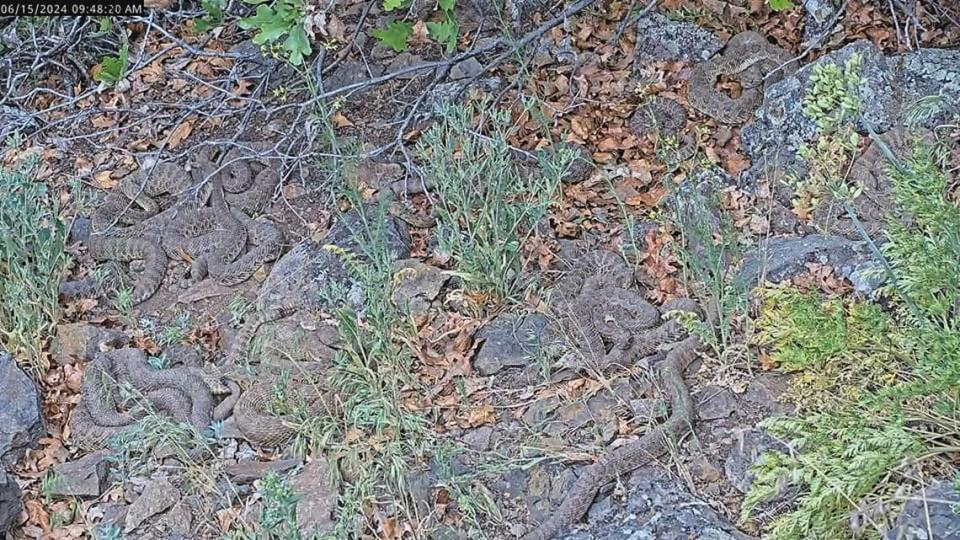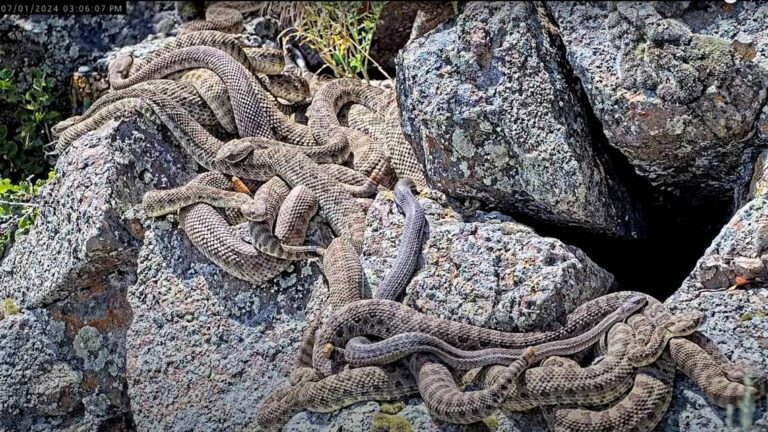In a scene that would make Indiana Jones shudder, Cal Poly researchers are offering the public a new opportunity to observe a “mega-den” filled with hundreds of Colorado rattlesnakes.
Researchers from Cal Poly Bailey College of Science and Mathematics They designed and installed a high-tech, solar-powered camera system in a Colorado rattlesnake den to observe hundreds of the snakes and learn about their behavior, according to a university news release.
This camera will broadcast live to the hundreds of occupants of the den Youtube And RattleCam.org 24 hours a day, seven days a week.
Located at an undisclosed location on private land in Colorado, the hideout is the second location to participate in the RattleCam project, which also operates a live stream from a private ranch in San Luis Obispo County.


On any given day, a viewer might see rattlesnakes basking in the sun and caring for their young later this summer, with the possibility of witnessing predators visiting the den and thirsty snakes emerging en masse to drink raindrops collected on their coiled bodies, the release said.
“This live feed allows us to collect data on wild rattlesnakes without disturbing them, facilitating unbiased scientific discovery,” Emily Taylor, a professor of biological sciences at Cal Poly and the project leader, said in the statement. “But even more important, the public can observe wild rattlesnakes behaving as they do naturally, which helps combat the biased imagery we see on television shows of snakes rearing up, being defensive and stressed, and interacting with people who provoke them.”
In the statement, Taylor said the rattlesnake pups will be born starting in August and will remain in the den until September to hibernate.
Data collected by the camera will help student researchers, such as Max Roberts, a master’s student in biological sciences, better understand how rattlesnakes maintain their body temperature, avoid sunburn and conserve water, the statement said.


It will also be used by Cal Poly liberal studies students to design an elementary school curriculum called “RattlEd.”
“Students in grades three through five will explore their own scientific questions while observing snakes with additional art, science and engineering activities to support their learning,” Cal Poly biological sciences graduate student Owen Bachhuber said in the release. “The team will measure how children’s perceptions of snakes change after participating in the RattleCam unit.”
The cameras will be turned off over the winter and will be available again the following spring, the statement said.


The best time to observe the den is early morning or late evening.
“We hope to eventually install cameras on snake gatherings around the world to help us better understand the behaviors of these complex social animals,” Taylor said.




